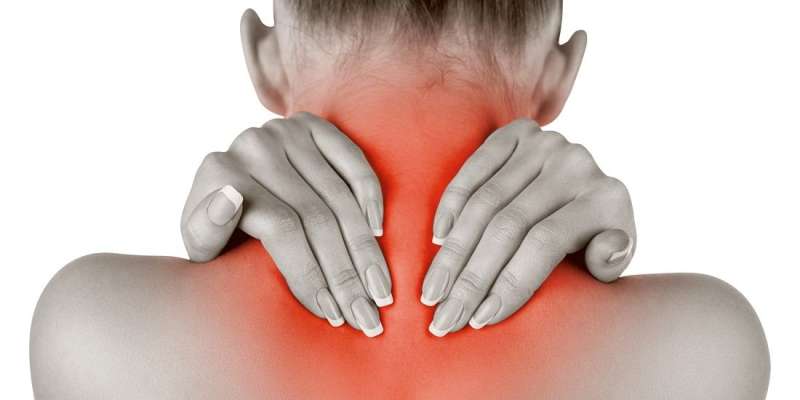Less physical therapy can be just as effective

The queues for treatment with physiotherapists in Norwegian municipal clinics are often long. Perhaps unnecessarily long. It's a scenario that is probably true across the Western world.
Now, however, a comprehensive analysis of different treatments sheds light on what works in treating patients with neck pain. The study shows that providing forms of manual treatment along with exercise therapy doesn't seem to improve treatment outcomes. Exercise therapy alone appears to yield the same benefits for patients as manual treatment combines with exercise therapy.
Ken Fredin, who is studying for his bachelor's degree at the Norwegian University of Science and Technology (NTNU), conducted the research review for his bachelor's thesis in physiotherapy. Associate professor Håvard Lorås at the university's Department of Neuromedicine and Movement Science advised Fredin and extended the project.
Their work is reflected in a systematic review and meta-analysis of research in the field and presented in the international journal Musculoskeletal Science and Practice.
Bachelor's degree projects do not typically end up in professional journals, but Fredin's thesis is not your typical bachelor's research. Fredin occasionally put in more than 12-hour days to bring the project to completion.
Fredin and Lorås reviewed 1169 different research articles, and eventually came up with seven articles that examined the effect of manual treatments as an adjunct to exercise therapy.
"We didn't find any additional benefits for pain intensity, function or quality of life from manual treatments," says physiotherapy intern Fredin.
Their conclusion applies to patients who suffer from neck pain without neurological symptoms, which is called grade I-II neck pain.
Manual therapies include a variety of manual methods that therapists use to treat musculoskeletal disorders, including mobilizing and manipulating joints, and massage. Exercise therapy consists of various training exercises that the patient carries out in consultation with the therapist.
Unnecessary additionThus, prescribing manual treatments in addition to exercise therapy so patients recover faster seems to have little point. The researchers found only very small and non-significant differences in their analyses.
At best, the discovery could help cut expenses and time and reduce long queues, since a large proportion of the population suffers from neck pain and seeks health care.
Manual treatment forms can still be beneficial"Our study says nothing about the effects of manual therapies on their own," says Fredin. "We've only looked at whether manual treatments have any effect when combined with exercise therapy."
Fredin wants to study manual therapies himself, and still believes that they have a place in the treatment of musculoskeletal disorders.
He would also like to study the reverse scenario - whether exercise therapy is beneficial when the patient is receiving manual therapy treatment, but he didn't find this combination of treatments in the large body of material he examined.
The reverse scenario "is an open field for research," Fredin says.
Despite the recognition he has received for his bachelor's thesis, Fredin - at least for now - wants to become a clinician rather than a researcher. He is currently beginning as an intern at St. Olavs Hospital in Trondheim.
More information: Ken Fredin et al, Manual therapy, exercise therapy or combined treatment in the management of adult neck pain – A systematic review and meta-analysis, Musculoskeletal Science and Practice (2017). DOI: 10.1016/j.msksp.2017.07.005














